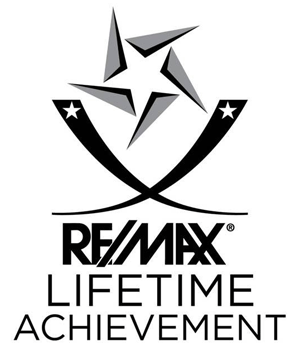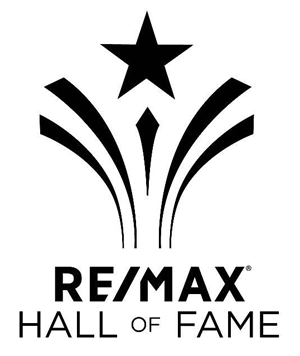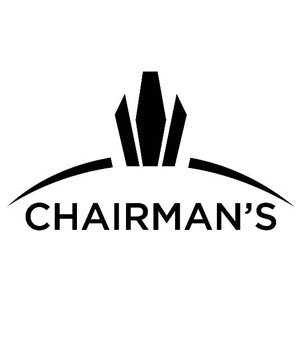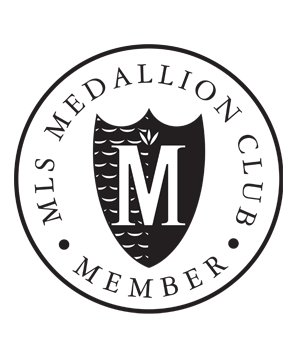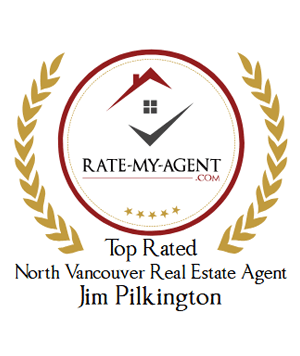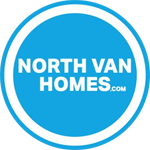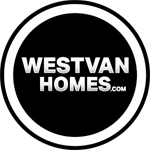Pricing your home correctly in North Vancouver’s competitive real estate market can make or break your sale. Set it right, and you’ll attract serious buyers who compete for your property. Price it wrong, and your home sits on the market while similar properties sell around you.
The difference between a quick, profitable sale and months of frustration often comes down to one thing: understanding what buyers will actually pay in your specific neighbourhood and market conditions.
North Vancouver isn’t just any real estate market. It’s a premium location where buyers pay for lifestyle, views, and proximity to both nature and downtown Vancouver. This unique positioning means traditional pricing strategies don’t always apply. You need an approach that considers the area’s distinct advantages while staying grounded in current market realities.
This guide will walk you through proven strategies to price your North Vancouver home effectively. You’ll learn how to analyze local market data, evaluate your property’s unique features, and choose the pricing strategy that generates the most interest from qualified buyers.
Understanding North Vancouver’s Unique Real Estate Landscape
North Vancouver commands premium prices for good reasons. The area offers something most Canadian cities can’t: mountain views, ocean access, world-class skiing, and a 20-minute commute to a major downtown core.
Buyers here aren’t just purchasing square footage. They’re investing in a lifestyle that includes hiking trails like the Grouse Grind, skiing at Cypress Mountain, and kayaking in Deep Cove—all while maintaining easy access to Vancouver’s business district via the Lions Gate Bridge or SeaBus.
What Drives Property Values in North Vancouver
Several factors consistently influence home prices across North Vancouver’s neighbourhoods:
Natural amenities and recreation access create immediate value. Homes near Lynn Canyon Park, Grouse Mountain, or with water views command significant premiums. Buyers pay extra for properties that offer direct trail access or mountain vistas.
School district quality particularly matters in family-oriented neighbourhoods like Canyon Heights and Edgemont Village. Top-rated schools like Canyon Heights Elementary and Handsworth Secondary draw families willing to pay higher prices for educational excellence.
Community character and walkability add substantial value. Neighbourhoods with village centres like Edgemont or Deep Cove attract buyers seeking small-town charm within a major metropolitan area.
Transit connectivity influences pricing significantly. Properties near SeaBus terminals or with easy highway access typically sell for more than comparable homes in less connected areas.
Limited developable land keeps supply constrained. North Vancouver’s geography—bounded by mountains and water—naturally limits new construction, supporting long-term price appreciation.
Understanding these value drivers helps you position your home effectively in the market. Your pricing strategy should highlight how your property delivers on these buyer priorities.
Conducting Your Market Analysis
Accurate pricing starts with thorough market research. A Comparative Market Analysis (CMA) forms the foundation of any effective pricing strategy, but it must be done correctly to provide reliable guidance.
Gathering Comparable Sales Data
Focus your research on three types of properties:
Recently sold homes (last 3-6 months) show what buyers actually paid in current market conditions. These “comps” provide your most reliable pricing baseline, but they must be truly comparable to your property.
Active listings represent your direct competition. Study homes currently for sale in your neighbourhood to understand pricing trends and identify how your property compares in features and condition.
Expired listings reveal what didn’t work. Properties that failed to sell often were overpriced for their condition or location. Learn from these mistakes to avoid similar pricing errors.
Selecting True Comparables
Not all similar homes make good comparables. Effective comps share these characteristics with your property:
Location proximity matters enormously in North Vancouver. A home in Upper Lonsdale may not compare well to one in Lynnmour, even if they share similar square footage. Stick to your specific neighbourhood or adjacent areas with similar characteristics.
Property type and size should align closely. Compare detached homes to detached homes, townhouses to townhouses. Square footage should be within 10-15% of your home’s size for accurate comparison.
Age and condition significantly impact value. A renovated 1970s home commands different pricing than an original-condition home from the same era. Factor in major updates like new kitchens, bathrooms, or roofing.
Lot size and features influence pricing, especially in North Vancouver where outdoor space commands premiums. Consider whether comparable properties offer similar yard space, decks, or landscape features.
Analyzing Market Trends
Beyond individual comparables, examine broader market patterns:
Days on market indicate buyer demand. If similar homes sell quickly (under 30 days), you’re in a seller’s market that may support aggressive pricing. Longer market times suggest more conservative pricing is needed.
Sale price to list price ratios show negotiation patterns. Properties selling above list price indicate strong demand and potential for competitive pricing strategies.
Inventory levels in your price range and neighbourhood affect pricing power. Low inventory favours sellers, while high inventory requires competitive pricing.
Evaluating Your Home’s Unique Selling Points
Your market analysis provides a baseline, but your home’s specific features determine where you price within that range. North Vancouver buyers pay premiums for certain characteristics.
Premium Features That Command Higher Prices
Views represent the biggest value-add in North Vancouver real estate. Mountain views, water views, or city skylines can add 15-25% to your home’s value compared to similar properties without views.
Outdoor living spaces appeal strongly to North Vancouver’s active lifestyle market. Well-designed decks, landscaped yards, hot tubs, or outdoor kitchens justify higher asking prices.
Recent renovations increase value, particularly updated kitchens and bathrooms. Energy-efficient upgrades like new windows, insulation, or heat pumps also attract environmentally conscious buyers.
Additional income potential through legal secondary suites or mortgage helpers adds significant value in today’s housing affordability climate.
Unique architectural features or custom elements can differentiate your property, but be cautious about over-pricing for highly personal design choices.
Addressing Potential Drawbacks
Honest assessment of your home’s limitations helps prevent overpricing:
Location challenges like busy road frontage, limited parking, or steep driveways require pricing adjustments. Don’t ignore these factors hoping buyers won’t notice.
Deferred maintenance issues should influence your pricing strategy. Major items like roofing, HVAC systems, or foundation work that buyers will need to address should be reflected in your asking price.Functional obsolescence such as awkward layouts, small kitchens, or limited storage may require competitive pricing to offset these disadvantages.

As an award winning realtor who has lived my entire life on the North Shore, let me showcase your home and all the beauty this area has to offer. Get in touch now.
Choosing Your Pricing Strategy
With your market analysis complete and your home’s features assessed, you can select the pricing approach that best fits your situation and goals.
Pricing at Market Value
This straightforward strategy prices your home in line with recent comparable sales. It attracts serious, qualified buyers who recognize fair pricing and often leads to smooth transactions with fewer complications.
When to use market value pricing: This approach works best in balanced markets or when you prioritize certainty and timeline over maximizing sale price. It’s also wise if your home has obvious comparable sales or if you need to sell within a specific timeframe.
Expected outcomes: Market value pricing typically generates steady showing activity from qualified buyers and leads to offers close to asking price. Sales usually complete within 30-60 days without major complications.
Strategic Under-Pricing
Pricing below market value aims to create buyer competition and potentially drive final sale prices above asking price. This aggressive strategy can work in seller’s markets with low inventory.
When under-pricing works: This strategy succeeds when inventory is extremely low, buyer demand is high, and your property has unique desirable features that will generate emotional responses from multiple buyers.
Execution requirements: Under-pricing requires excellent marketing, open house management, and offer presentation skills. You must be prepared to manage multiple offers and create genuine competition among buyers.
Risks to consider: If competition doesn’t materialize, you may sell below market value. This strategy also requires strong nerves and faith in your market assessment.
Premium Positioning
Pricing above comparable sales targets buyers seeking unique properties and those with flexibility in their budget. This approach requires exceptional property features or market conditions.
When premium pricing works: Unique properties with no direct comparables, luxury homes with exceptional features, or markets with rapidly rising values may support premium positioning.
Success factors: Premium pricing requires flawless presentation, professional photography, comprehensive marketing, and patience. Your property must clearly justify the price premium through superior features or location.
Common pitfalls: Overpricing typically leads to extended market time, reduced buyer interest, and eventual price reductions that can stigmatize your listing.
Market Timing and Seasonal Considerations
When you list your North Vancouver home can impact both sale price and time on market.
Optimal Listing Seasons
Spring market (March-May) traditionally sees highest buyer activity. Families prefer moving during school breaks, and improved weather showcases outdoor properties better. Competition from other sellers increases, but so does buyer demand.
Fall market (September-November) offers another active period as buyers return from summer activities and want to settle before winter. Less competition from other sellers can benefit your listing.
Winter and summer present different challenges and opportunities. Winter buyers are typically more serious and motivated, while summer buyers may be relocating for work. Lower competition during off-peak seasons can help your property stand out.
Market Condition Adjustments
Seller’s markets with low inventory allow for more aggressive pricing strategies. Buyers have fewer options and may pay premiums for desirable properties.
Buyer’s markets with high inventory require competitive pricing and superior property presentation. Buyers have choices and will move quickly past overpriced properties.
Balanced markets reward accurate pricing and good marketing. Neither buyers nor sellers have significant advantages, making fair market value pricing most effective.
Professional Property Presentation
Pricing alone doesn’t guarantee sale success. Your home’s presentation significantly impacts buyer perception and willingness to pay your asking price.
Essential Preparation Steps
Decluttering and depersonalization helps buyers envision themselves in the space. Remove personal items, excess furniture, and clutter that makes rooms appear smaller.
Deep cleaning and minor repairs demonstrate pride of ownership. Address obvious maintenance issues, ensure all fixtures work properly, and consider fresh paint in neutral colours.
Professional photography and marketing materials showcase your property effectively. High-quality photos, virtual tours, and compelling listing descriptions attract more qualified buyers.
Staging Considerations
Staging can increase perceived value and help justify your asking price. Professional staging typically pays for itself through higher sale prices or faster sales, particularly for vacant properties or those with challenging layouts.
Seasonal staging adjustments highlight your property’s year-round appeal. Summer staging might emphasize outdoor spaces, while winter staging could focus on cozy interior features.
Work with a Local Real Estate Expert
Successfully pricing and selling your North Vancouver home requires deep local market knowledge and proven negotiation skills. The complexity of this market—with its diverse neighbourhoods, unique buyer motivations, and premium price points—makes professional guidance invaluable.
I’ve spent my entire life on the North Shore and bring over 25 years of sales and marketing experience to every transaction. My comprehensive understanding of North Vancouver’s distinct neighbourhoods allows me to position your property effectively and attract the right buyers.
My marketing approach combines targeted online campaigns with traditional media to maximize your property’s exposure. With a database of over 1,000 active buyers and ownership in key local real estate websites like NorthVanHomes.com and WestVanHomes.com, I ensure your listing reaches serious buyers actively searching in your area.
I’ll guide you through every aspect of the pricing process—from conducting detailed market analysis to highlighting your home’s unique features and selecting the optimal pricing strategy. My goal is making your selling experience stress-free while maximizing your financial return.
If you’re ready to sell your North Vancouver home and want expert guidance on pricing it for maximum market impact, I’d welcome the opportunity to discuss your goals. Book an appointment with me, Jim Pilkington, and let’s develop a winning strategy for your property sale.
Frequently Asked Questions
What’s the best time of year to sell a home in North Vancouver?
Spring (March-May) and fall (September-November) traditionally see the highest buyer activity and competition. However, North Vancouver’s desirable location keeps the market relatively active year-round. Selling during quieter periods like winter can sometimes be advantageous due to less competition from other sellers and more motivated buyers.
How much does it typically cost to sell a home in North Vancouver?
Expect to budget 6-8% of your sale price for total selling costs. This includes real estate commissions (typically 5-6%), legal fees ($1,500-3,000), and potential additional costs like staging, repairs, or moving expenses. Factor in property transfer tax if you’re buying within BC.
Should I renovate before selling my North Vancouver home?
Focus on high-impact, cost-effective improvements rather than major renovations. Fresh paint, professional cleaning, minor repairs, and enhanced curb appeal typically provide good returns. Kitchen and bathroom updates can add value, but full renovations rarely recoup their entire cost. Consult with your realtor about which improvements make financial sense for your specific property and market conditions.
How do I know if my asking price is too high?
Warning signs include few showing requests, limited buyer feedback, or properties listed after yours selling first. If you haven’t received any offers within the first 2-3 weeks in a normal market, consider whether your pricing is competitive. Your realtor should provide regular market feedback and recommend adjustments if needed.
What happens if my home doesn’t sell at my initial asking price?
If your home isn’t attracting buyers, start by analyzing the feedback and market response. Sometimes minor adjustments to presentation or marketing can help, but often a price reduction is necessary. Strategic price reductions (5-10%) can re-energize buyer interest and generate new showing activity.
How do North Vancouver property taxes affect my sale?
Property taxes are typically adjusted between buyer and seller at closing based on the possession date. Current tax assessments don’t directly impact your sale price, but buyers do consider ongoing carrying costs. High-end properties may face additional school taxes or empty homes taxes that affect buyer calculations.

